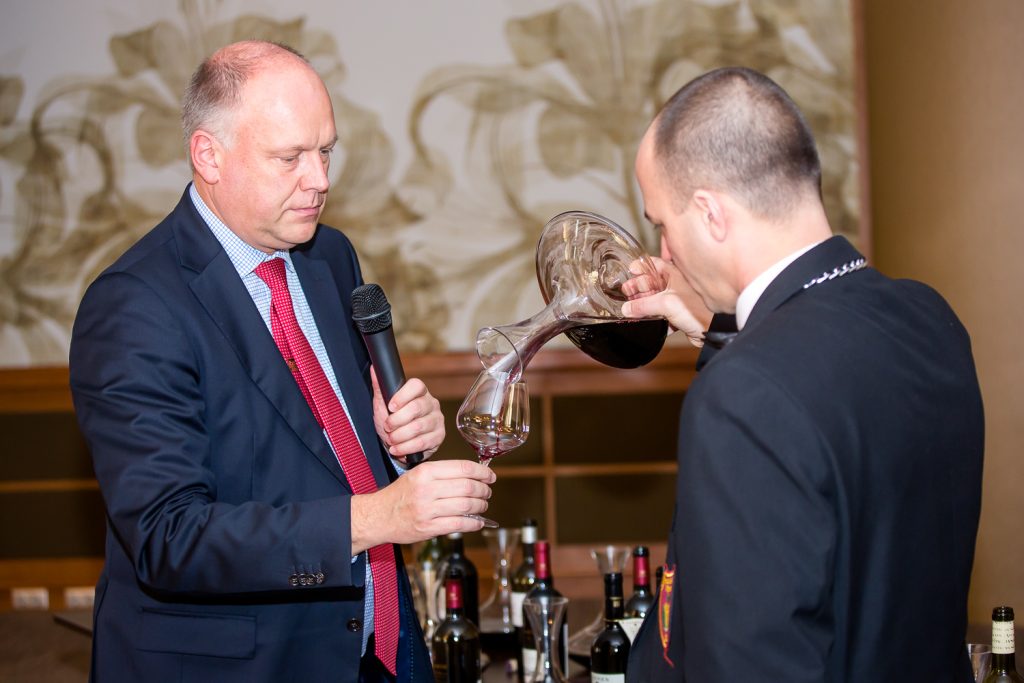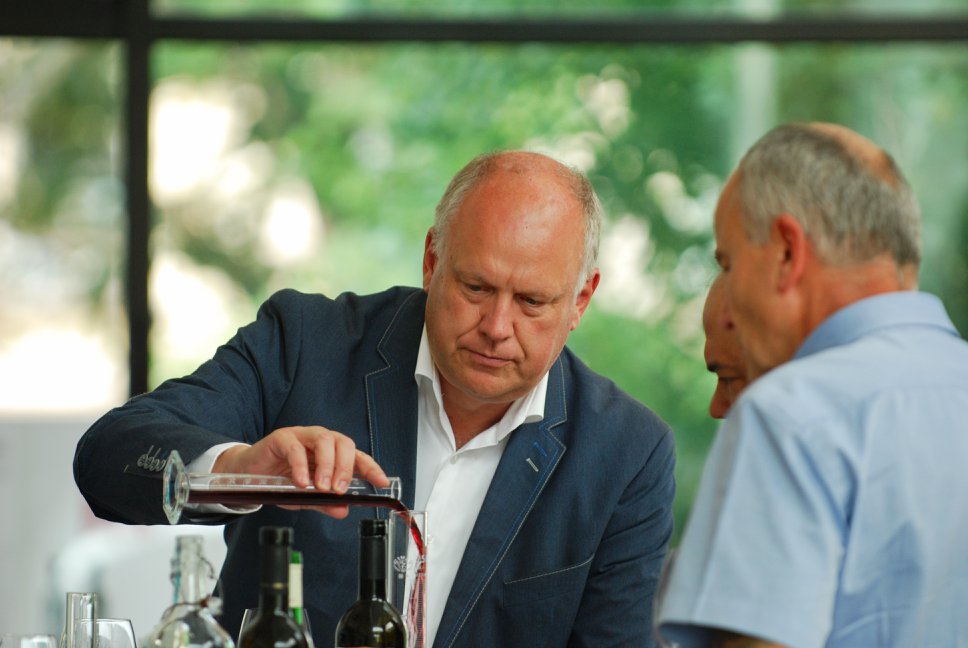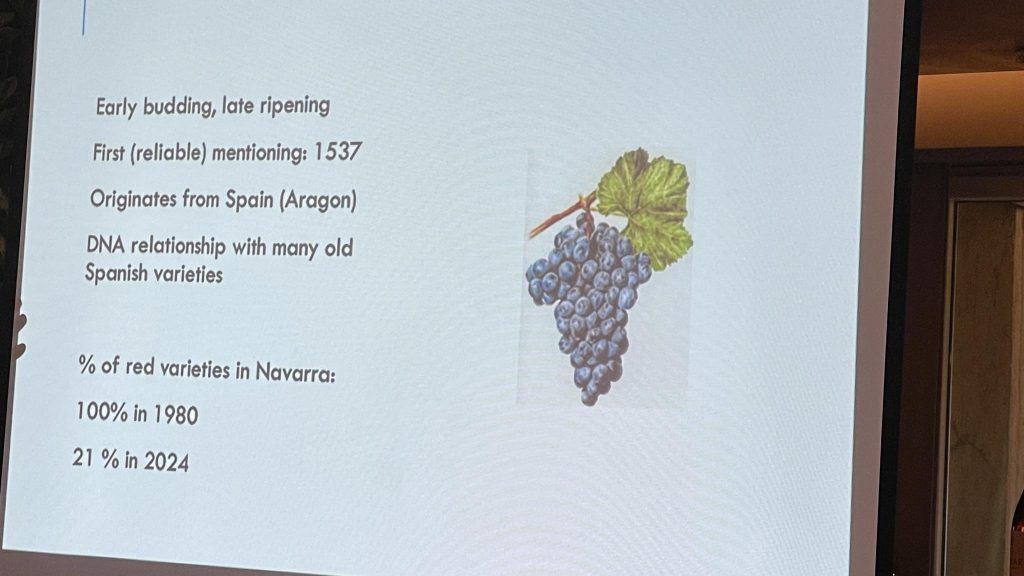Frank Smulders MW brings his Navarra Garnacha to Hungary
By Robert Smyth
He really believes in the Garnacha
Franks Smulders MW really believes in the Garnacha grape variety, especially in the Spanish region of Navarra — in fact, so much so that he decided to make wine there.

“Navarra has huge potential for high quality Garnacha,” he said, adding that the north-eastern Spanish region, which was originally planted exclusively with the thin-skinned black grape (known as Grenache in France), made a huge mistake by permitting the planting of other varieties.
Master of Wine since 1992
Frank Smulders is a Dutch Master of Wine, who has been working in wine business since 1985 with almost 35 years of experience. In 1992 he became the second European Master of Wine.
http://franksmulders.nl/
Franks Smulders MW: “It’s my wine but I don’t have a winery.”
“Allowing Tempranillo and various international varieties to be planted was the death of Navarra,” said the Dutch wine expert and self-proclaimed ‘Garnachista’, at a tasting of his wines that are released under the Liskar label, at the N28 Wine & Kitchen in Budapest’s District VI last month. Liskar wines are distributed in Hungary by Vinonovi (webshop: https://vinonovi.shop) and are also available at N28 Wine & Kitchen. Smulders owns neither a cellar nor vineyards. “It’s my wine but I don’t have a winery. I have contracts with friends there, and I rent space in the village coop,” he says.

“We’re one of the latest to harvest Garnacha in Spain.”
Smulders’ first wines were made in 2019 and he now makes around 100,000 litres of wine a year. “I want to make the best possible wine, so the grapes are picked when they’re exactly ripe,” he says. While this does lead to the wine having alcohol of up to 14.5%, it is balanced by the high acidity of his enclave of Navarra, Smulders asserts. “We’re one of the latest to harvest Garnacha in Spain. The climate is continental with snow in winter, and a cooling wind blowing in constantly from the Pyrenees.
Rose with 2% of red wine
Navarra is well-known for its deep-coloured, inexpensive rosé, which according to the region’s regulations must be made by ‘bleeding off’ the rosé from a fermenting red wine. This is a method that Smulders rejects for the production of the highest quality rosé. “Navarran rosé was a bi-product of red wine. The law in Navarra prescribes rosé is made by bleeding off the must, I destem the grapes and then do direct pressing,” he says.
He adds 2% of red wine to it before bottling. The result is a full-bodied yet very fresh tasting, bone-dry rosé from the 2021 vintage of a pale orange-deep onion skin colour, with zesty acidity that cuts through the 14.5% alcohol. This is the kind of rosé that has the goods to age and is in great shape in its third year, when most rosés have long been consumed. The vines for this rosé were planted in 1950.

we don’t want risk
The second wine we taste is Liskar Gaxta 2022, a red Garnacha ‘estate wine’ from the 2022 vintage, with Gaxta being a local name for Garnacha. “The Tinto Joven philosophy is that anything decent goes into oak, but this is made in concrete, with a controlled fermentation from cultured yeast, we don’t want risk,” he said, adding that this lighter style red was fermented for eight days. This fruit-forward wine exudes strawberry and cherry notes, and its featherlight tannins make it ideal for chilling it a little in summer.
Garnacha is not good for new oak
The next wine we sample is Liskar Txiki 2021, with the name txiki meaning ‘small’ in Basque, which is a nod to the wine’s short ageing and its lightness. It is zesty and spicy. Next up was Liskar Garnacha 2019, which was Smulders’ first wine, from the 2019 vintage. It is an old-vine, field-blend (i.e. all the grapes were fermented together) from three different vineyards, planted between 1900 and 1930, comprising eight different clones of the Garnacha grape variety. “Garnacha is not good for new oak, I bought second-hand barrels from Margaux, Bordeaux’s Château Palmer to age it in,” said Smulders. It has a light cherry colour and is peppery and spicy on the nose and palate.

I never wanted to put a bottle under cork.
The final wine, Liskar Ugasti 2020, comes from a 0.4-hectare vineyard planted in 1900. It is really complex, with a combination of fresh red fruit, mixed spices from both the grape variety and the subtle oak, as well as focussed acidity that helps deliver a very long finish.
Incidentally, all Liskar wines are bottled under screwcap. “I never wanted to put a bottle under cork. We’ve let ourselves be influenced by cork producers. Reduction is not an issue with screwcap,” says Smulders. All of these wines are great choices for those looking for those seeking wines that are lighter in tannins, yet full in flavour.
Grenache (/ɡrəˈnæʃ/) or Garnacha (IPA: [ɡaɾˈnatʃa]) is one of the most widely planted red wine grape varieties in the world. It ripens late, so it needs hot, dry conditions such as those found in Spain, where the grape is believed to have originated. It is also grown in the Italian island of Sardinia, the south of France, Australia, and California’s Monterey AVA, Paso Robles, Santa Barbara County and San Joaquin Valley. (wikipedia)


